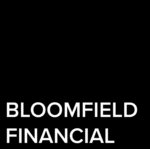About Our In-House Portfolios
If you have landed on this hidden page it should be because you are invested in one of our in house portfolios!
At Bloomfield Financial, we run two types of in-house investment portfolios for clients on our ongoing service plans:
- Growth-Oriented Portfolios – These reinvest all income back into the investments to maximise long-term growth.
- Natural Income Portfolios – These are designed to produce a steady stream of interest and dividends, which can be paid out if needed.
Which approach is right for you depends on your personal goals, attitude to risk, and—crucially—your tax position. We’ll have discussed this with you as part of your plan, but if anything has changed or you’d like a fresh review, just ask.
The figures here are how the portfolios have performed overall, your own performance will of course vary depending on the timing of withdrawals and deposits, we will always provide a personal update at review but if you need one sooner just let us know.
Note: Income portfolios typically show lower total returns than growth portfolios over time. That’s not underperformance—it’s simply because income is being paid out rather than reinvested.
What You’ll Find Here
This private page is designed to give you a general update on how all our portfolios have been performing—not just your individual investments.
If you want an update specific to your holdings or to discuss how your portfolio fits into your wider plan, just let us know and we’ll arrange a personal review.
Here you can Find...
- Scroll down for the latest performance numbers across all portfolios
- Scroll down for a downloadable factsheet for each
- Click here for a short explainer PDF if you’d like to understand the structure and philosophy behind our portfolios
- Explainer Videos - To refresh your memory on how the portfolios work
Help Videos
Need a little help in understanding how our portfolios work an the Logic behind them, just drop us a line or give us a call … or watch the videos below.
Growth Portfolio Reports
Below you will find a table summarising portfolio overall performance over several periods and a link to the most recent detailed Fact Sheet. As they are portfolio’s each of them are made up of many funds who have their own factsheets and KIIDs a copy of which you can download by clicking here .
All the performance figures are cumulative percentage returns and represent the portfolios as a whole individual investor figures will vary depending on dates of deposits, withdrawals, tax wrapper and other variables.
Figures last updated 29/09/2025
If you’re on a mobile or tablet and can’t see all the table info, press the plus sign to expand.
Income Portfolio Reports
Below you will find a table summarising portfolio overall performance over several periods and a link to the most recent detailed Fact Sheet. As they are portfolio’s each of them are made up of many funds who have their own factsheets and KIIDs a copy of which you can download by clicking here.
All the growth (performance) figures are cumulative percentage returns and represent the portfolios capital growth as a whole individual investor figures will vary depending on dates of deposits, withdrawals, tax wrapper and other variables.
Historic yield is the dividend / interest the portfolio in it’s current makeup would have provided in the last 12 months.
Although all the portfolios are designed to produce regular income, as we move up the volatility scale we see a shift towards capital growth becoming more important so income will generally fall.
Figures last updated 29/09/2025
If you’re on a mobile or tablet and can’t see all the table info, press the plus sign to expand.

